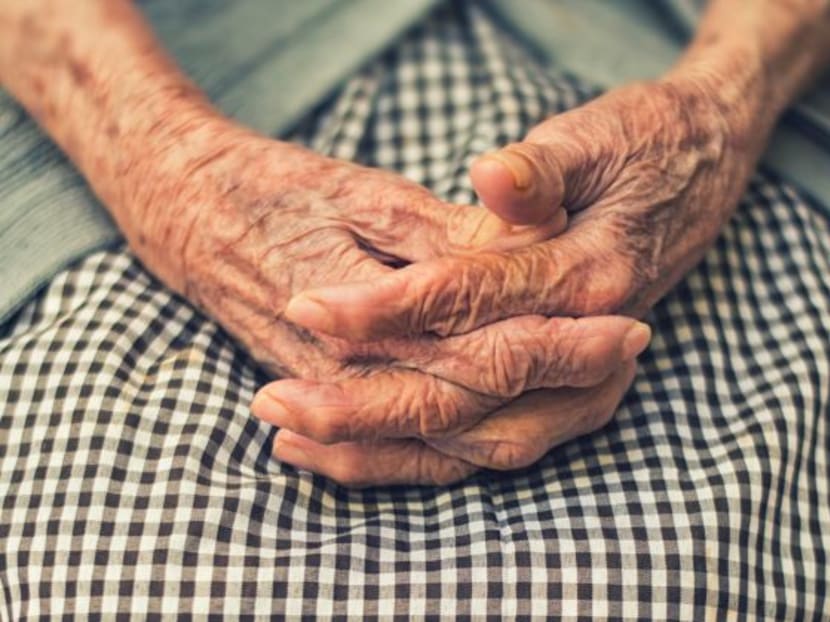Half of S’pore’s elderly found to be frail, mostly due to malnutrition
SINGAPORE — A study spanning 14 years and counting has found that half of the elderly here are frail — especially the low-income, and those who are single, divorced or widowed — due to factors including malnutrition, lack of exercise and having chronic diseases.

A study spanning 14 years and counting has found that half of the elderly here are frail. Photo: unsplash.com
SINGAPORE — A study spanning 14 years and counting has found that half of the elderly here are frail — especially the low-income, and those who are single, divorced or widowed — due to factors including malnutrition, lack of exercise and having chronic diseases.
With the number of the elderly living alone set to rise, the researchers of the National University of Singapore study yesterday noted that elderly who are frail are twice as likely to die earlier compared to their peers, and stressed the need for senior citizens to take matters in their own hands.
“There is much that older people can do for themselves to avoid becoming frail and disabled, so it is vital that they pay attention to a good-quality diet and nutrition, engage in physical exercise, and participate in socially and cognitively stimulating activities,” said Associate Professor Ng Tze Pin, who is the lead researcher.
At the same time, voluntary welfare organisations and healthcare providers should also work together and roll out programmes for the elderly to have more nutritious meals, or do strength-building exercises such as tai chi or squats.
The longitudinal study was started in 2003, and involved almost 3,000 elderly aged 55 years and above, with the oldest resident being 96 years old. It found that malnourishment was a big factor in causing frailty.
More than half of those who were frail were found to be malnourished — a proportion that was more or less in line with the international average.
Socio-economic factors could lead to malnutrition, Assoc Prof Ng said.
“Eating is also very social, you’re more likely to eat more with others than alone. So imagine an old person living alone at home, and they’re probably not eating full meals every day, especially if they have no spouse. Also, they may be too poor to afford nutritious, good meals, and more often than not they are simple and bland,” he added.
Appetite and absorption of nutrients also gets poorer with age, and the situation is worsened if they lose their teeth, he noted.
Having chronic diseases was also a major factor, with about 80 per cent of the frail elderly having five or more chronic diseases.
Among the frail elderly, 60 per cent had no formal education, 66 per cent lived in one- or two-room flats, while 45 per cent lived alone. An overwhelming majority — 91.5 per cent — were single, divorced or widowed.
Assoc Prof Ng — who is from the Department of Psychological Medicine at the NUS Yong Loo Lin School of Medicine — said that compared to their peers, elderly folk who are physically frail are two to 10 times as likely to become “functionally disabled”, or have a physical or mental impairment that limits their capacity for independent living. He added: “When physical frailty and cognitive impairment are present together in the same individual, he or she is more than 20 times as likely to become disabled, hospitalised or die earlier.”
A separate study — conducted between 2010 and 2013, involving 250 elderly folk aged 65 years and above — found that intervention measures such as physical and cognitive training, and more nutritious meals, reduced frailty and depressive symptoms among the respondents.
Their cognitive functioning also improved.
Following the findings of the two studies, the NUS research team is working with the national Geriatric Education and Research Institute, as well as social service organisations, to develop and implement pilot frailty screening, and community intervention programmes.
Between 2000 and 2014, the proportion of one-person households in Singapore increased from 8 per cent to 11 per cent, Social and Family Development Minister Tan Chuan-Jin said in a 2015 speech.
In the speech, he also touched on how changes in family structures — fewer nuclear family households, small household sizes and more aged households — could prompt a re-examination of the way the Government crafts its policies.






